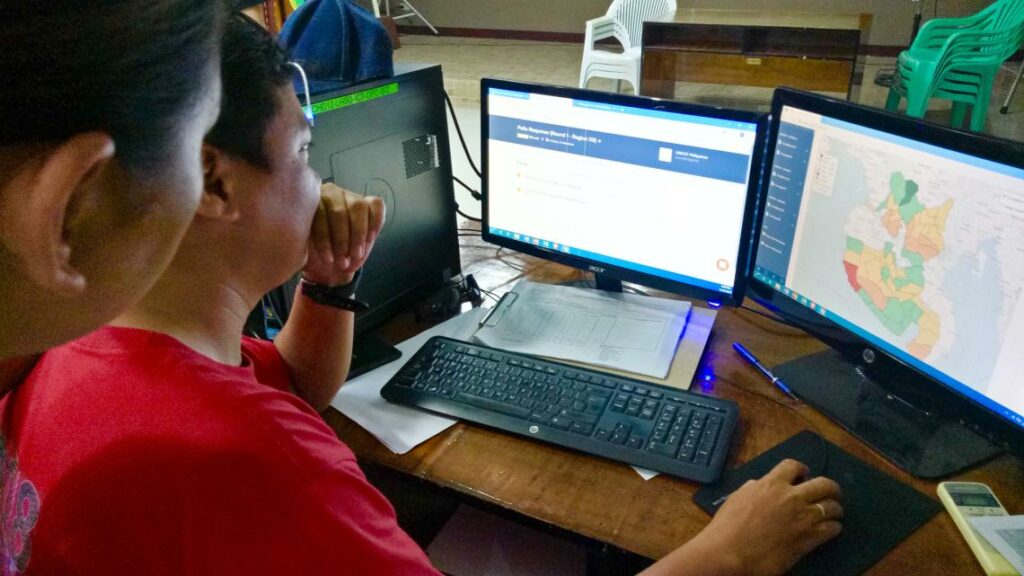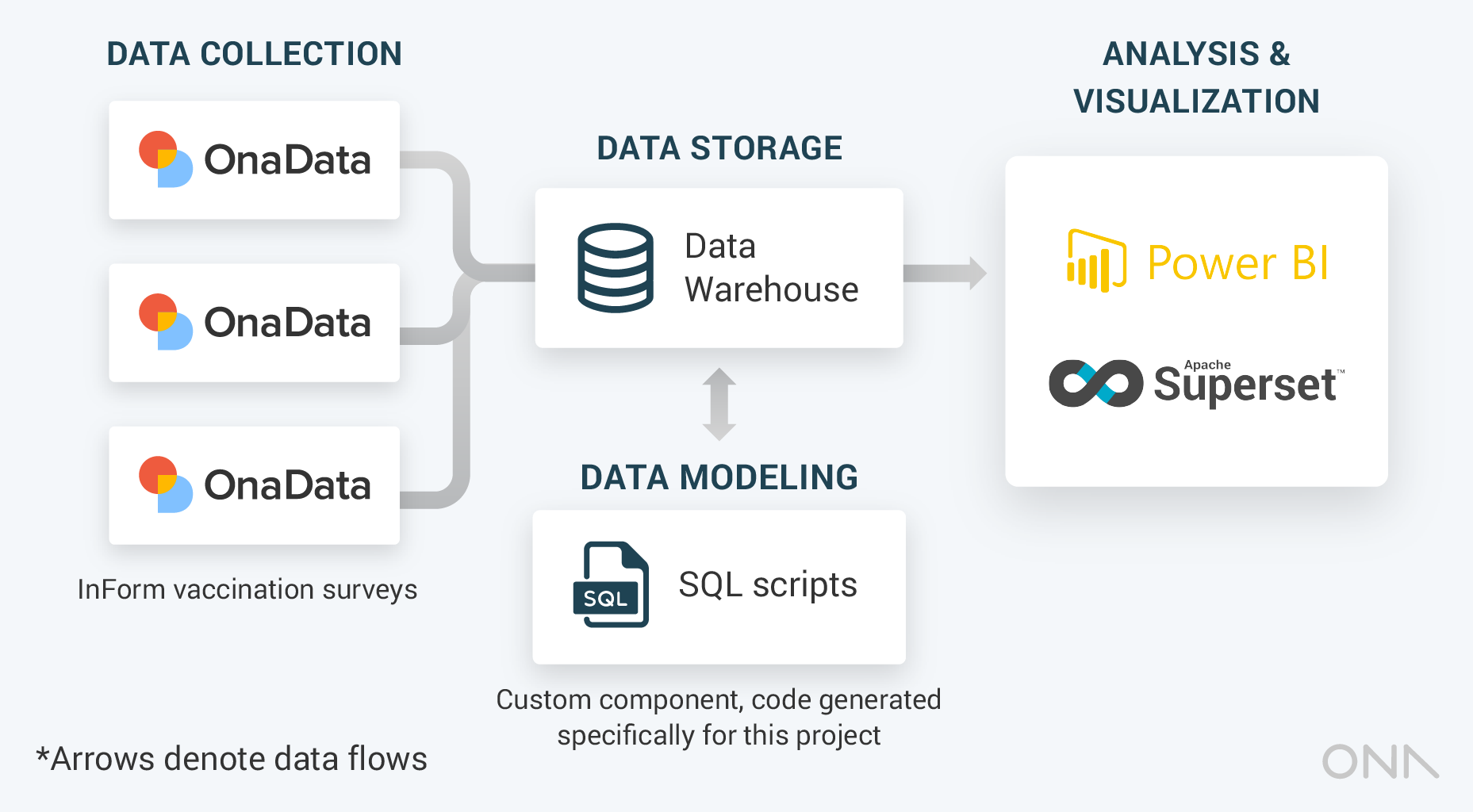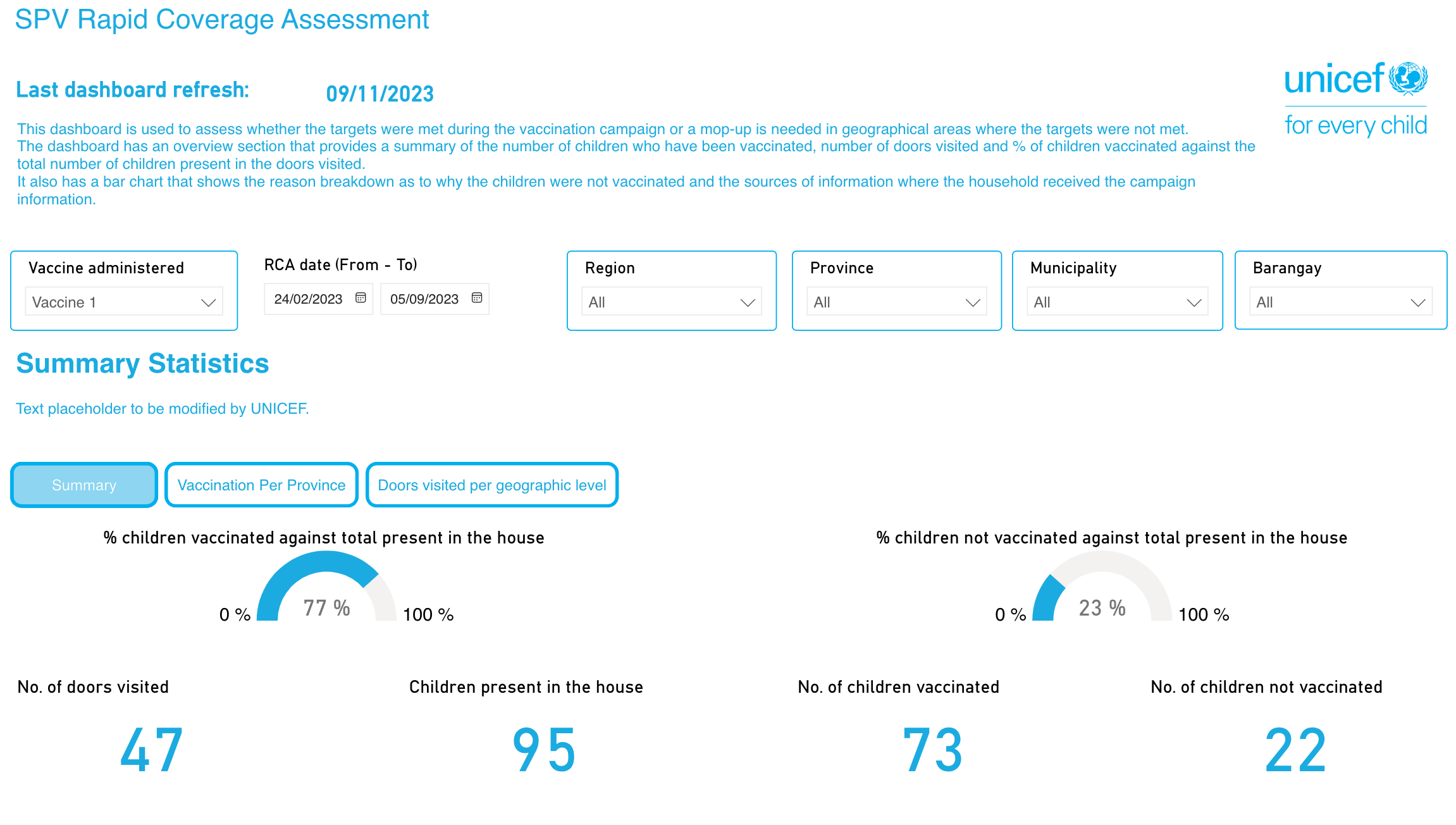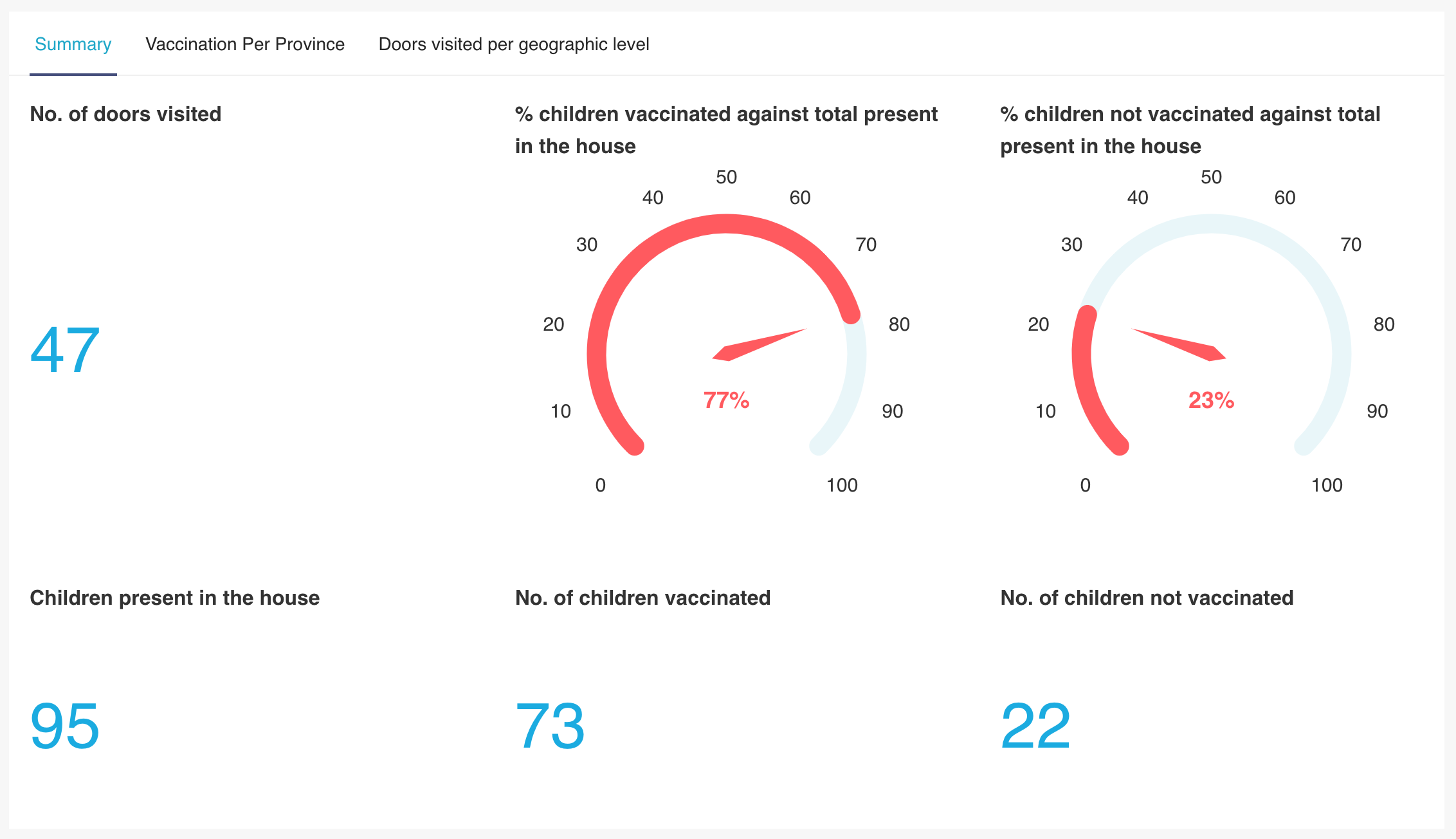Standardizing vaccination coverage monitoring with the RT-VaMA toolkit
 © UNICEF Philippines/2019/Bacal
© UNICEF Philippines/2019/Bacal
Vaccination campaigns are routine around the world, yet the quality of care children receive in rural areas varies widely depending on how well campaigns are run and monitored. UNICEF Philippines recognized that better care requires standardized operations including monitoring and vaccination activity tracking. They wanted a more cohesive approach that would improve the quality of individual campaigns, as well as enable planners to make meaningful comparisons between vaccination programs in different countries or regions and share information with different agencies effectively.
In response to this need, UNICEF partnered with Ona to create Real-time Vaccination Monitoring and Analysis (RT-VaMA), a deployment toolkit for monitoring vaccination campaigns in the Philippines. Its purpose is to address gaps in timely data processing and analysis in vaccination coverage, while also fostering knowledge-sharing among various countries, sectors, and agencies. RT-VaMA is designed to be adaptable for use in other countries with UNICEF Papua New Guinea currently rolling out the toolkit nationwide.
Technical Solution
In collaboration with the UNICEF Philippines Country Office, Ona developed the RT-VaMA toolkit in four different layers working together to manage the data flow.

1. Data collection on InForm
Ona and UNICEF Philippines developed six form templates using the XLSForm syntax. To ensure the forms were generic, we reviewed every survey question and rephrased them to ensure they could apply to a wider audience. The templates were uploaded to the InForm platform, which is a UNICEF-customized version of Ona Data for streamlined access by other UNICEF country offices.
2. Data storage on the Canopy data warehouse
Ona created data connectors to pull data from the InForm platform for storage in a dedicated analytics database. The data warehouse acts as a central storage repository for all project-related data where all country-related data can be stored securely and analyzed.
3. Data modeling using SQL scripts
Ona prepared SQL scripts to generate custom views and tables based on the agreed indicator sets to achieve data transformations (with data joins and aggregations) and create tables that are useful to decision-makers for reporting. The SQL scripts are executed against the appropriate data warehouse for each campaign and the resulting objects provide decision-makers with constant access to relevant campaign data for analysis and planning.
4. Data visualization on Superset and Power BI
The UNICEF Philippines Country Office provided an indicator template sheet with definitions of indicators previously used in monitoring vaccination data. Ona reviewed the indicators and identified on the most generic ones that could be added to the dashboard templates for each survey tool. Ona then developed the dashboard templates on Superset and Power BI for the selected indicators.

Rapid coverage assessment dashboard on Power BI

Rapid coverage assessment dashboard on Superset
Toolkit Deployment and Maintenance
In order to support RT-VaMA implementation, Ona provided documentation and training to the UNICEF Philippines Country Office on customizing toolkit components (forms templates, SQL scripts, and dashboard templates) and utilizing the Ona-built data connectors. Because toolkit localization and implementation is semi-technical, UNICEF country offices have the option of utilizing their internal IT staff or engaging with Ona directly to implement RT-VaMA for new campaigns.
Toolkit Impact
Since May of 2023, UNICEF has used the RT-VaMA toolkit to help immunize 9 million children against measles, rubella, and polio across 18 regions. UNICEF has also implemented the toolkit in Papua New Guinea where they plan to scale this work across 22 provinces to immunize 1.3 million children against measles and rubella in the coming years. Drawing on lessons learned from localizing the application to fit new country contexts, UNICEF aims to expand the use of RT-VaMA in other priority countries beyond 2023.
It has been a long journey, and we are proud of the positive impact our digital tools and partnership with UNICEF have had and will continue to have on child immunization. We look forward to the continued opportunity to work alongside UNICEF to improve health outcomes for children globally with RT-VaMA— where need is greatest, using data to transform lives.

